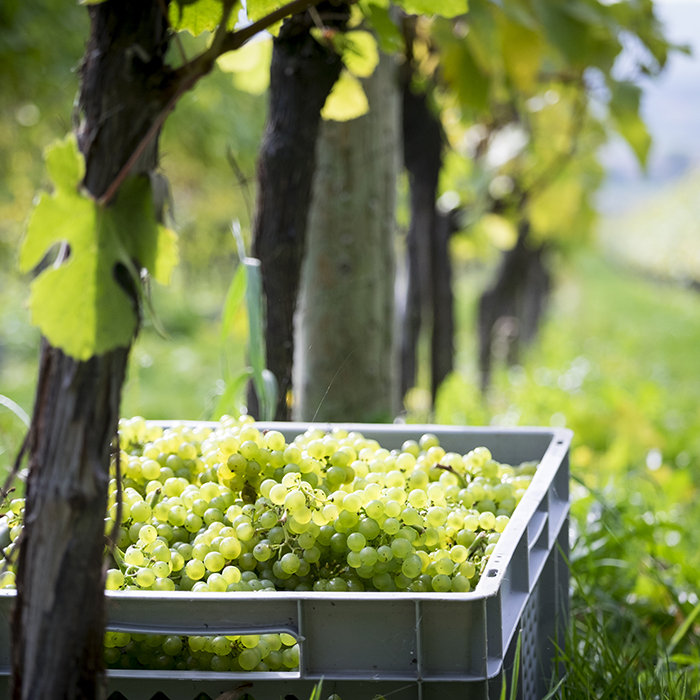Notes from the vineyard: harvest
Author: Guest Blogger

Harvest 2017 is has just drawn to a close at Nyetimber. As I write this, we’ve completed all of our picking, having first started with Pinot Noir and Meunier, and the final Chardonnay grapes from our Hampshire vineyards reaching our pressing centre on the evening of Friday 20th October.
This year marks the first harvest in our new pressing centre, located adjacent to our Manor vineyard just outside West Chiltington in West Sussex. The pressing centre is designed to handle grapes and juice as gently as possible, with the headline feature being a gravity-fed system for transferring juice from the press to tanks. For sparkling wine, all of our grapes are pressed as whole bunches to enable extraction of fine, clear juice with limited skin contact. Transferring the juice by gravity allows us to go one step further in obtaining elegance and finesse in our wines.
Harvest is a busy time for us because we want to bring in the grapes from each of our vineyard blocks at the optimum time, and also to minimise, as much as possible, the time between when grapes are cut from the vine and their juice is fermenting in the winery.
Because all of Nyetimber’s grapes are harvested by hand (a crucial quality point for sparkling), our picking only happens during daylight hours. Pressing, therefore, regularly continues late into the evening (and right through the weekend if we are harvesting then).
During the pressing process, we separate the juice into four fractions as it flows out of the press. The best-quality fraction is called “cuvée”, and represents about half of the berry’s weight as volume (so for example 1kg of grapes would yield 500ml of Cuvée juice). However, as Cuvée is the most important juice in terms of quality, we follow its extraction very closely by tasting, and if any dip is noticed, we cut the extraction early.
The flavours of freshly pressed grape juice are transient and don’t necessarily relate to the finished product, so while tasting from the press I’m not too concerned about fruit flavours. Instead, I’m looking for the structural elements of acidity and tannin/bitterness: as you move through an extraction, acidity tends to decrease and the tannin content increases, neither of which is desirable in sparkling wine, if they go too far in those directions. Cuvée juice, therefore, represents the portion of juice where these parameters are optimum, and is the first part of the overall juice extraction.
I’m very encouraged that we’ve been able to extract the theoretical quantity of Cuvée in most cases and not needed to cut early. I take that as a measure of quality, and therefore can say that 2017 is certainly off to a good start. I’m noticing lovely balanced acidity and elegant, clean flavours in the juices which should translate well into the wines. We hold off, however, as much as possible from making full quality assessments at the juice stage, because – as I like to say – sugar can be seductive. By that, I mean that the sweetness of juice can charm you into not recognising all characteristics fully. Once we have dry, settled wines, then Cherie Spriggs and I can start more rigourous quality assessments, as then the wines’ true characteristics are more evident.
Next month, Brad will focus more on the winemaking process and the early indications of quality for the 2017 vintage. In the meantime, feel free to comment below. You can find out more about Nyetimber on bbr.com, and read the full series of “Notes from the vineyard” here.


